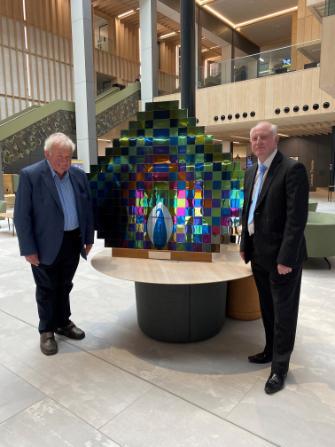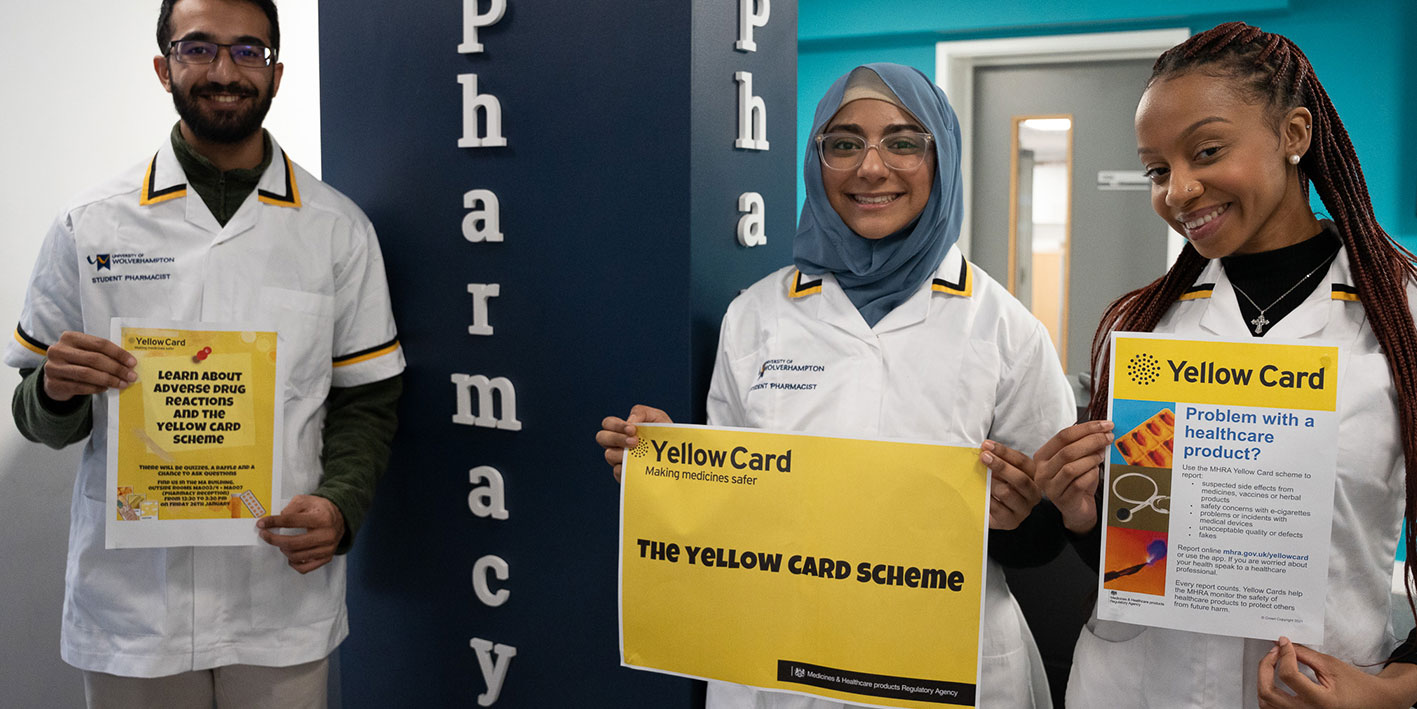
Former Wolverhampton Technical College student puts colour into stainless steel
A Wolverhampton educated Chemistry student put the colour into stainless steel with an invention that has been reflected in buildings across the world - and he’s just donated a prototype ‘peacock’ called Percy to the School of Architecture and Built Environment at Springfield Campus.
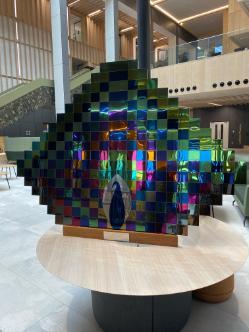
Dr Tony Hart, 79, studied A Levels in Chemistry, Physics and Maths at Wolverhampton Technical College before it became Wolverhampton Polytechnic and then the University of Wolverhampton. He went on to enrol on a Diploma of Technology in Applied Chemistry Sandwich Course at Birmingham College of Advanced Technology, working as a Trainee Chemist at Joseph Lucas Electrical based in Birmingham.
While he was working in the International Nickel Research Laboratory, also based in Birmingham, he was appointed Research Investigator of the Corrosion section where a process for colouring the surface of stainless steel had been discovered, but the coloured films were very soft and easily removed. A number of other Research Investigators in the laboratory attempted to develop hardening techniques without success - the coloured film was known to be porous but fillers such as silicate or silicone were ineffective.
Tony used his electroplating experience gained at Lucas and started a trial see if the pores could be filled with electrodeposited metal to harden the film. He began by using copper and nickel but neither proved successful, then moved on successfully to electrodeposited chromium, which, after a six-month trial period working on the hardening effect of treatment, was ready for patenting.
Following graduation he worked in various areas in surface coating technology and as a result was awarded the degree of Doctor of Technology by the Council for National Academic Awards in 1992 for his many contributions to this important area of technical knowledge.
Tony said: “The results were amazingly encouraging in that the electrolytic treatment in chromium plating solutions not only gave a much harder surface but also did not alter the sparkling colours of the film and could also be used on large areas of stainless steel sheets typically 2,400 mm by 1,200 mm and on complex three-dimensional shapes.
“My success with this invention resulted in my being promoted to Leader of the Electroplating Section of the Laboratory which actually took me away from the mainstream work of taking a laboratory process into a commercial venture that was adopted worldwide, still more than 50 years later remains in full scale production in many countries and the only process by which stainless steel surfaces can be coloured.”
Percy the Peacock was commissioned for the reception area of the Research Laboratory’s new premises along with a number of other exhibits featuring the success of the laboratory. The peacock was designed to show the range and brilliance of the colours of the process.
Tony said: “Percy remained in the reception area until the laboratory closed in the late 1980s after which it was transferred to the offices of the Nickel Institute in Alvechurch. When these offices closed in about 2011 I was presented with the peacock which was on the wall of the reception area of my company Hart Materials Limited in Wombourne.
"I wasn’t sure what to do with Percy and to be serious this is a unique article that demonstrates the visual quality of an electrochemical process that has been used in large scale industrial production for over fifty years and for which these has never been any replacement. It is a process developed in a famous West Midlands Laboratory by an industrial chemist who was raised and educated in Wolverhampton so it appeared to me that there was a natural and significant connection with the City which is why I contacted the University.”
“The positioning of ‘Percy’ in the School of Architecture and Built environment is most appropriate since the major use of coloured stainless steel is now seen in major architectural projects across the world.”
Paul Hampton, Interim Head of the School of Architecture and Built Environment, said: “We were delighted to accept Percy the peacock for display in our exciting new building. The process by which stainless steel is coloured has transformed architecture across the world and this will be of significant interest to students studying in the School – both from an architectural and built environment perspective.
“It’s wonderful to see how the University’s historical presence has resulted in such long-lasting inventions that are still relevant and present in the world today, with very firm roots in Wolverhampton.”
Percy will take pride of place in the University’s new £45 million School of Architecture and Built Environment at Springfield Campus in Wolverhampton.
Some examples of the process in use at Hyatt Place, Dalton Nuclear Institute and Angela Ruskin University.

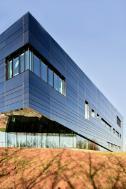
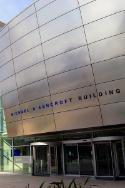
Picture caption from left to right: Dr Tony Hart, Percy and Dr Paul Hampton.
Anyone looking to study at the University of Wolverhampton should register for one of our forthcoming Open Days.
ENDS
For more information please contact the Corporate Communications Team.


/prod01/wlvacuk/media/departments/digital-content-and-communications/images-2024/240328-Varsity-Line-Up-Resized.jpg)
/prod01/wlvacuk/media/departments/digital-content-and-communications/images-18-19/220325-Engineers_teach_thumbail.jpg)
/prod01/wlvacuk/media/departments/digital-content-and-communications/images-2024/240404-Digital-Humanities-Training-Resized.jpg)
/prod01/wlvacuk/media/departments/digital-content-and-communications/images-2024/240320-Uzbekistan-Resized.jpg)
/prod01/wlvacuk/media/departments/digital-content-and-communications/images-2024/240229-The-Link-Resized.jpg)
/prod01/wlvacuk/media/departments/digital-content-and-communications/images-2024/240404-Pharmacy-Students-Resized.jpg)
